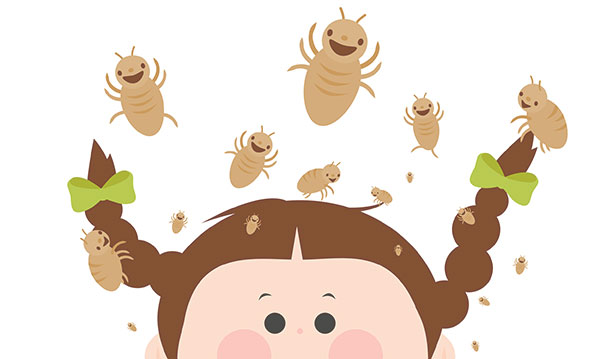How to Prevent and Cure Head Lice

September 28, 2017
At the moment, there are currently outbreaks of head lice in almost every school throughout the Bel Air area, and not everyone is taking the proper precautions to get rid of the nasty little bugs. There’s many different things you can do to get rid of or prevent them, though some either don’t know what to do, or what they do end up doing doesn’t always work.
Head Lice are tiny six-legged insects that live on the head of a human and feed exclusively on human blood. Though extremely annoying and the cause of allergic reactions to some, they don’t carry disease, so they’re not really as dangerous as they could be. Lice come in a few different colors: white, brown, gray, and black. A female louse can, and will lay six to eight eggs, also known as nits, every day. The nits hatch around six to seven days after they’re laid, and can be annoying to remove. Though lice need blood to survive, they can live for a short time on other things, like clothes or brushes which allow them to easily transfer from human to human. Contrary to popular belief, head lice cannot jump or fly, they’re not a sign that someone has gone unbathed for a longer period of time, and they’re not the scourge of the lower class. Someone from any walk of life can end up with head lice, no matter who they are.
Getting rid of lice isn’t the easiest thing to do, but it’s definitely not too hard. Most supermarkets and pharmacies carry lice repellant and treatment over-the-counter, so it’s easy to pick it up if you do end up with lice. Treatment types vary, from a one-time hair treatment, to certain shampoos that’ll also help over a long period of time. Some places also have sprays, but those aren’t always the most effective way of getting rid of them. Bed sheets, pillow cases, and blankets should be washed if you were treated for head lice, and any stuffed animals should be bagged up for 24 to 48 hours to make sure that any lice remaining on them are dead.
To prevent yourself from getting lice before or after getting stuck with them, avoid making head-to-head contact with others, as this gives lice a free ride to someone else. Lice are pretty fast, so quick contact could leave you with the chance of getting them. Sharing things like brushes, bows, etc. could also get you stuck with head lice, considering they can live for about 24 hours without blood before they do die. Home remedies including mayonnaise, vinegar, and tree oil don’t necessarily work to help prevent lice, and there’s no real proof or testing that has been done behind them to show whether or not they actually do work or not. Most pediatricians advise against using them as primary treatment and prevention.
Head Lice are fairly easy to get rid of, granted you have the right treatments and preventions, though there’s nothing that really makes us completely immune to getting the bugs. The only real way to stay “immune” from getting head lice is avoiding head-to-head contact with someone else, which is something that happens to a decent amount of people on a daily basis. That being said, it still is possible to avoid them. As long as you stay smart, make sure you can treat them, and don’t share too many brushes or anything of the like, you should be free of head lice for a fairly long time.

